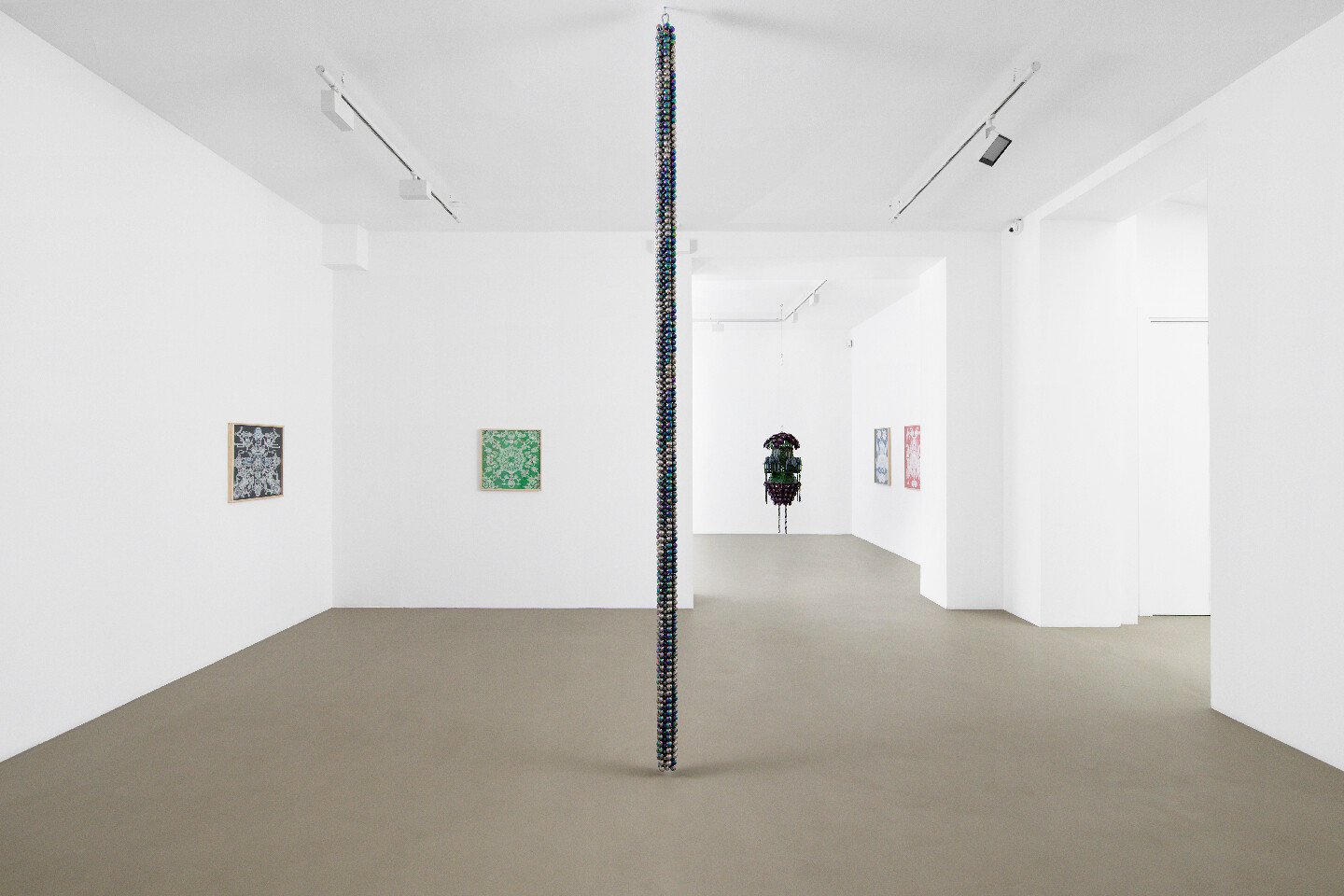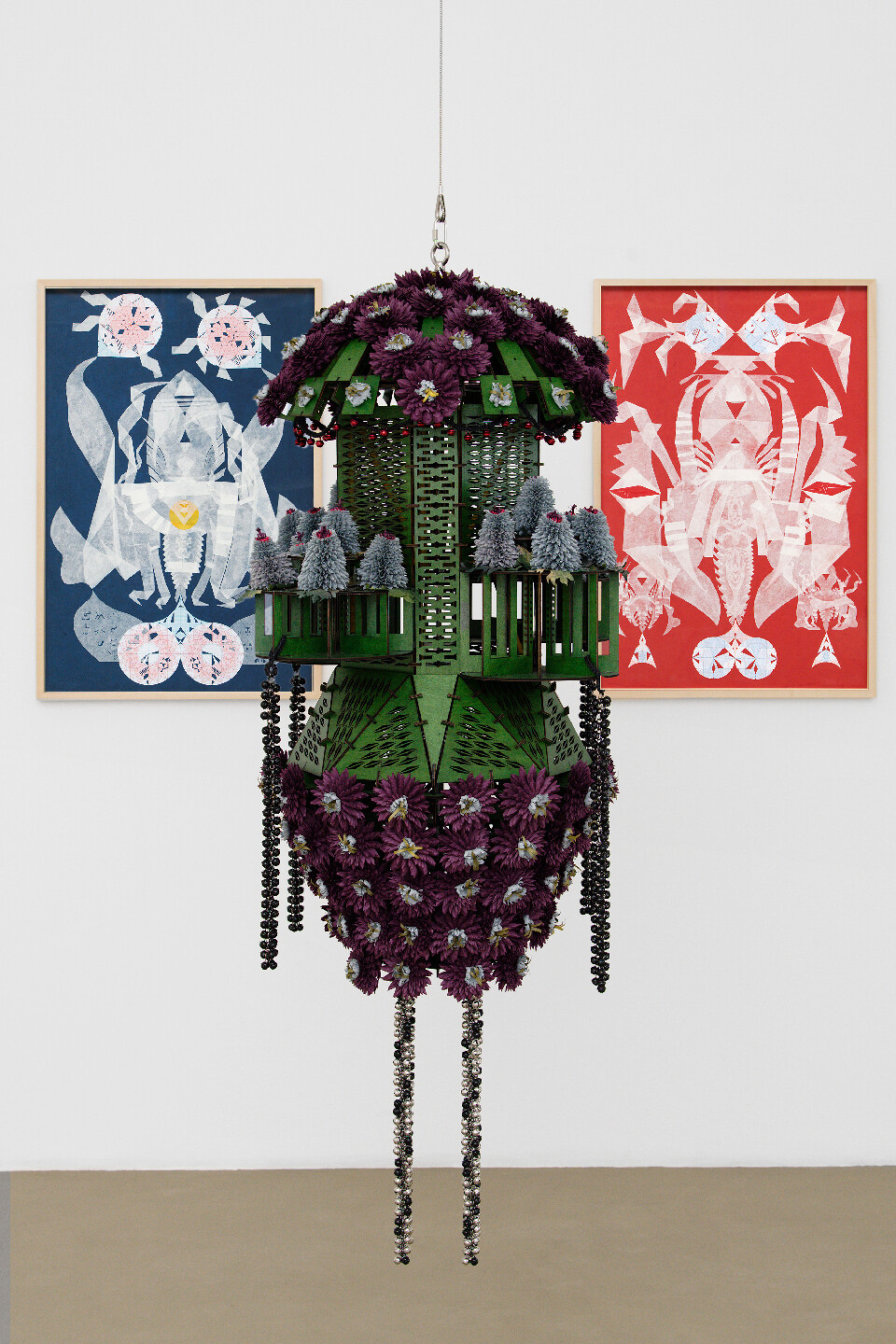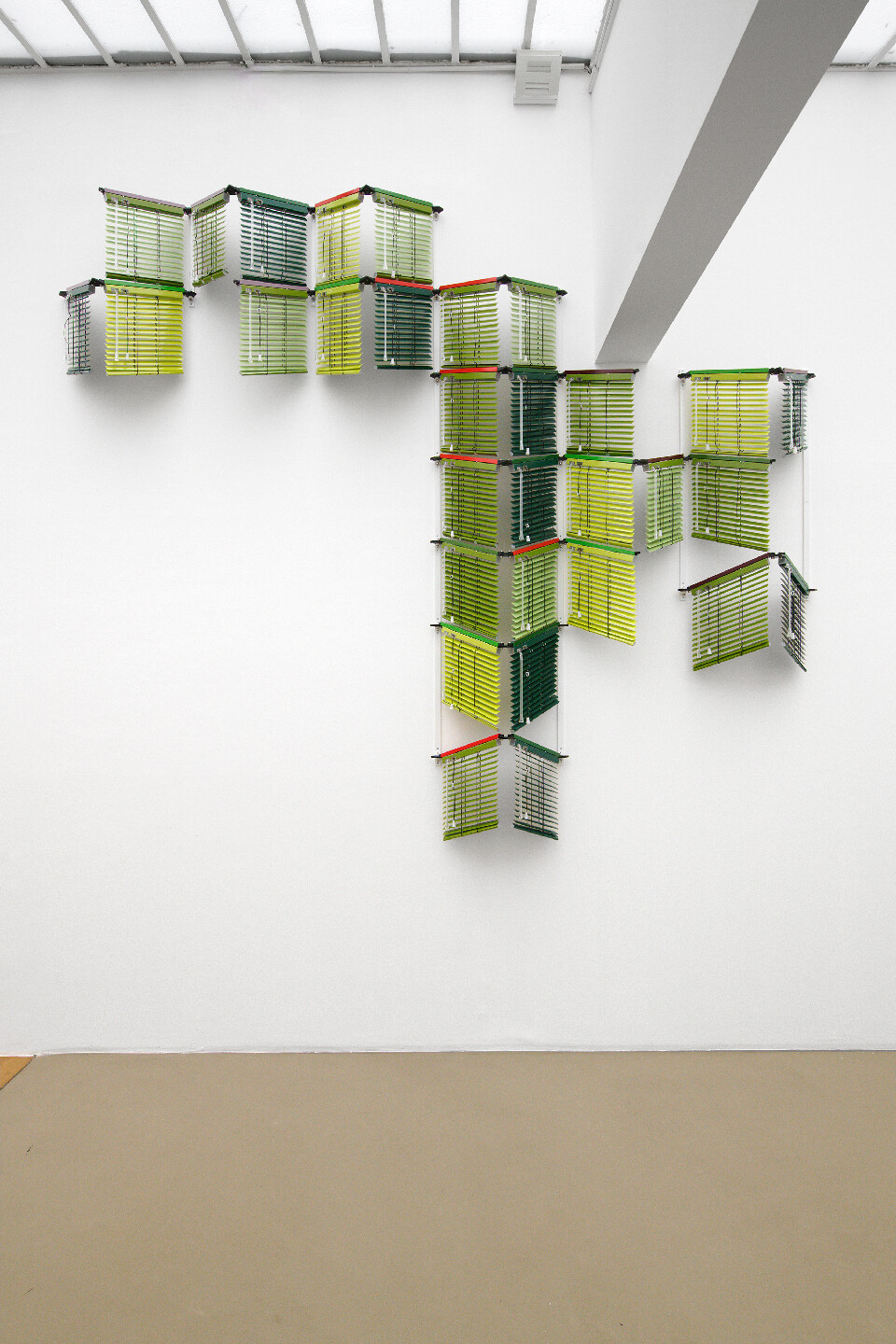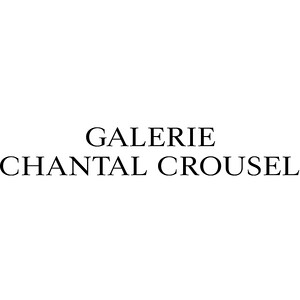Mesmerizing Mesh – Paper Leap and Resonating Habitat
October 18–December 3, 2022
10 rue Charlot
75003 Paris
France
Hours: Tuesday–Friday 10am–6pm,
Saturday 11am–7pm
T +33 1 42 77 38 87
galerie@crousel.com
Galerie Chantal Crousel is pleased to announce Haegue Yang’s fourth solo exhibition at the gallery. The exhibition presents Yang’s further exploration of her signature materials such as venetian blinds and metallic bells as well as her recent investigation into hanji (traditional handmade Korean paper derived from the mulberry tree), which has resulted in a new body of work consisting of paper collages.
Mesmerizing Mesh—Paper Leap and Resonating Habitat, the exhibition title, reveals the two main elements of the show—paper works and sculptures. Nineteen hanji collages from the Mesmerizing Mesh series form the exhibition’s focus; alongside these, sculptures made of paper, bells, and venetian blinds inhabit the rest of the gallery space in an intriguing co-existence.
Yang’s engagement with paper collage techniques has become recognized through the production of series, such as Trustworthies (since 2010) and Hardware Store Collages (since 2012). Mesmerizing Mesh (since 2021) however, builds its central idea onto counter-authoritarian spiritual orientations such as shamanism. While her research has been extensive, her production deliberately circles around the materiality of paper. Hanji or similar mulberry paper can be found in various artistic as well as ritualistic traditions in places like Korea, Japan, and China. For her initial production of Mesmerizing Mesh, Yang has focused on motifs and objects in shamanism, Shinto, and folk rituals used to create objects reserved for purifying, healing, and exorcizing rites.
The Mesmerizing Mesh works take different forms. Some deal with the process of “formation” and are composed of geometric and abstract patterns unfolding and spreading out from the center. They reference sumun, a sheet hung from the ceiling in rituals sites to keep away evil spirits. Others represent figurative and almost anthropomorphic motifs. They resemble soul sheets (nukjeon), in which the shaman blows a spirit treated as the identical entity of the deceased being honored. Of late, the collages have been displayed against hand-dyed multicolored backdrops and also gradually combined with vegetal or animal motifs drawing from the Slavic tradition of wycinanki. By folding, cutting, and perforating hanji, Yang examines a methodology shared between artists and shamans of taking “mystic leaps” out of earthly matter into something beyond.
Next to the Mesmerizing Mesh, Mesmerizing Pagoda—Overgrown Ultramundane Flowers (2022), a sculpture made of green painted birchwood and hanji flowers, is suspended from the ceiling. Paper has been chosen instead of real flowers, similar to sacred paper money, and hanji flowers appear both in Korean Buddhist as well as shamanistic rituals. Most of those hanji flowers are fantastical, symbolizing the topology of sacred places beyond this world, while the structural panels are all cut by computer numerical control or CNC, a common technique in the architectural world of maquette-making.
In the corridor, two wall-mounted blind works are on view. Angular Evergreen Climber Habitat (2022) and Alternating Hollyhock Habitat (2022) present Yang’s employment of venetian blinds. As industrial and domestic objects, the blinds are a hybrid material, both common and personal. Drawn to their ambiguity as well as their formal structure of slats that can be opened and closed, the artist’s blind installations evoke the permeable boundaries between inside and outside, private and public. The titles of Yang’s new works allude to the natural home of living organisms, imagined as welcoming environments for creeping plants such as the hollyhock or evergreen climbers to grow and develop. Their spread-out shape gives the impression that they are devouring the walls, growing indefinitely on their fertile environment while concealing it completely. Far from their original function as objects, the blinds no longer cover windows and hide the inside of the home; they now obscure walls, making the “home” disappear under their developing force.
Three Sonic Celestial Ropes (2022) hanging from the ceiling punctuate the gallery space. In Yang’s Sonic Sculptures, the primary material is the bell, used as a visual, physical, and sonic material. Not only do bells carry connotations of sound and movement, each of Yang’s Sonic Sculptures emits an inherent sound when activated by human intervention, referencing the rattling of bells in religious ceremonies and rites. The Sonic Celestial Ropes, in particular, were inspired by a Korean folk tale of two siblings who climbed a robe into the sky to escape a tiger, eventually turning into the Sun and the Moon. By interpreting the rope as one of bells, the artist highlights the bell as a medium between the physical and spiritual realms.
In the parquet room, a display of books, including several rare ones, provides further insight into various paper cutting traditions, such as Korean, Japanese, Chinese, Jewish, Slavic and Mexican cultures. This focused selection of resources sheds light on Yang‘s sources of inspiration and reflection as well as anticipate Yang’s future development of Mesmerizing Mesh.








